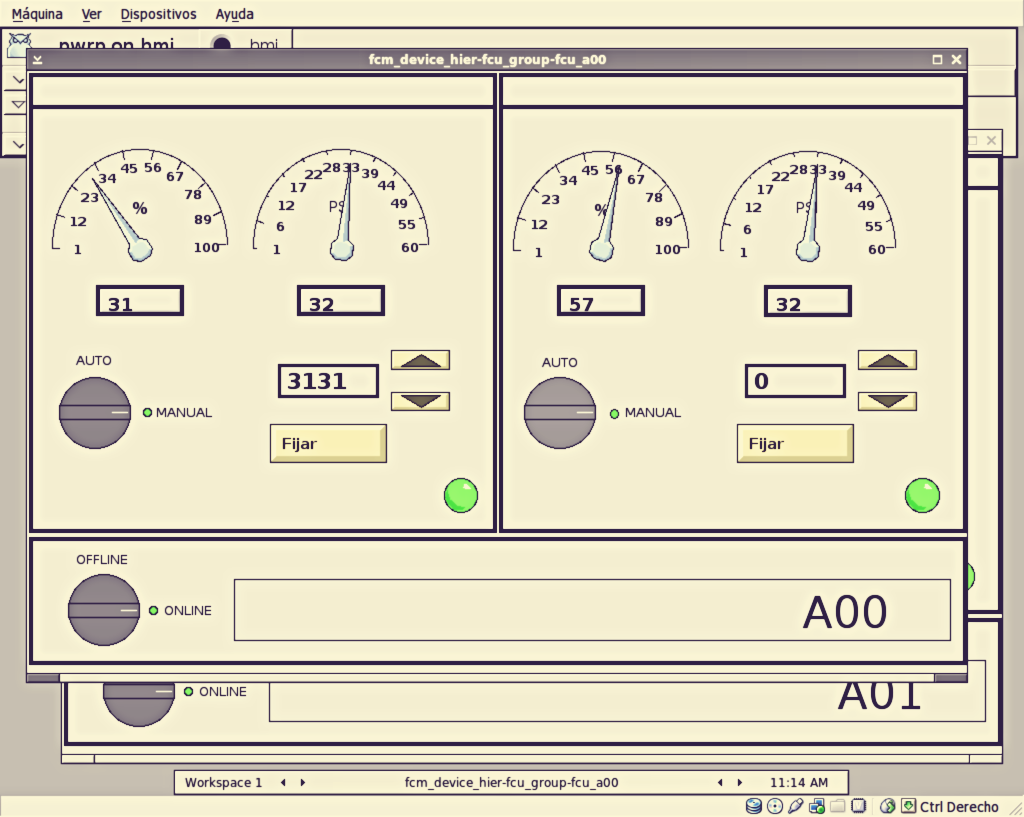The basic definition of a state machine is a set of states S, with a subset of initial states I, another subset of final states F, and a set of transitions between states T, and every state s’ ∈ S ∧ s” ∈ S where I ⊆ S ∧ F ⊆ S, and each element on T { s’, s”, h }, with s’ as the current state, s” as the next state and h as the state action. On my current automation project where I am using ProView, I have each device controlled by state machines, and each user or automatic control request is queued on a priority queue, where the highest priority is executed replacing any previous execution state, because we have only one communication channel. So the basic state machine definition is not enough to hold every environmental variable that we are using to control each device.
The state machine model includes on each transition a basic model defined as { s’, s”, g, f, h }, with s’ as the current state, s” the next state, g a boolean function evaluating the environment, f as guard boolean function preventing errors and h as action function. Where g is similar to f, but it covers the feasibility of the state change, because it evaluates if the device state (offline, online + automatic, online + manual), and f evaluates if the request is feasible according to the current composite device state (pump + valve + manometer), where each operation request was written as follows.
struct fcu_request_s {
bool channel;
bool done;
bool nobreak;
int errors;
int cycle;
fcu_io *device;
pwr_tUInt16 operation;
fcm_task_prio_t priority;
struct timespec start_t;
struct timespec current_t;
struct timespec end_t;
fcu_state_machine_t *machine;
};
Where every boolean member is evaluated using the boolean function g, integer members are evaluated using the boolean function f, and if both function are not blocking the action, the action h is executed.
Finally the state machine is mutable, because there are dynamic states which are triggered by boolean functions, and every transition is not strict, they are only a behaviour template rather than strict states to be used on each transition. From the processing node, each HMI signal is checked against the boolean functions, and each state transition is strictly evaluated before executing the action. This is more representative than single state transitions from the original state machine model, allowing better control. Where we are using dynamic programming to hold state transition tables and previously evaluated boolean functions which are common to the composite device state.

